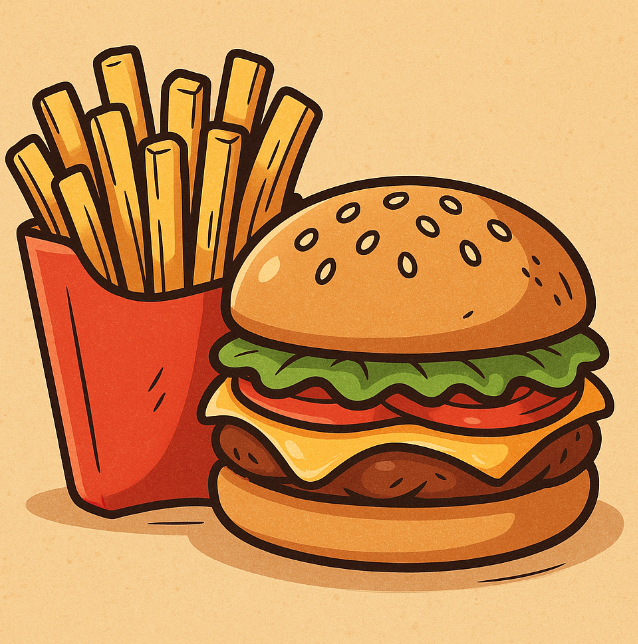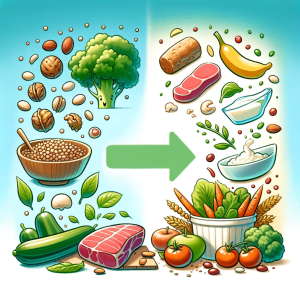
55% Higher Liver Disease Risk from Fast Food Diets
For millions of people, the answer to “What’s for dinner?” comes in a paper bag, passed through a drive-thru window. It’s quick, cheap, and tasty. But according to new research, that convenience may come with a serious cost to your liver.
A sweeping meta-analysis, pooling data from over 169,000 people across nine studies, found that frequent fast food consumption is linked to a 55% higher risk of non-alcoholic fatty liver disease (NAFLD). Even more concerning, the same eating patterns were tied to a 37% greater risk of obesity, a major driver of liver disease.
If that sounds alarming, it should. NAFLD is the most common chronic liver condition in the world, affecting roughly a quarter of the global population. Left unchecked, it can progress silently to more severe conditions like liver fibrosis, cirrhosis, or even cancer—often without symptoms until it’s too late.
Why This Matters Now
Public health professionals have been tracking a steady rise in NAFLD over recent decades, and it’s no coincidence that fast food consumption has surged during the same period. Modern fast food is designed for maximum palatability and shelf life, not for metabolic health. High levels of saturated fat, refined sugar, sodium, and ultra-processed ingredients make it calorie-dense but nutrient-poor.
The researchers behind this new analysis pulled together observational data from diverse regions—Lebanon, Spain, Greece, the U.S., Bangladesh, Iran, and the U.K.—and still found the same pattern: people who eat more fast food are more likely to have NAFLD. The results held steady even after accounting for different age groups, dietary habits, and diagnostic methods.
The Biology Behind the Burgers
The link between fast food and liver disease isn’t just statistical—it’s grounded in how our bodies process these foods:
1. Insulin Resistance: Fast food’s sugar and fat combinations impair insulin signaling, which promotes fat storage in the liver.
2. Obesity as a Catalyst: Extra calories and nutrient imbalance contribute to weight gain, which fuels liver inflammation and fat buildup.
3. Gut Microbiota Disruption: Ultra-processed foods can alter gut bacteria in ways that increase toxins entering the liver, spurring inflammation.
These processes can happen silently over years, making NAFLD a “hidden epidemic” that’s often only discovered during routine blood work or imaging.
A Global Issue, with Local Flavors
One interesting nuance in the data: “fast food” isn’t the same everywhere. In Mediterranean countries, some items may be grilled or use olive oil, while in other regions, deep-frying and heavy refined carbs dominate. Despite these differences, the risk signal persisted across cultures—suggesting that ultra-processed, high-calorie convenience food is the common denominator.
The study also revealed some variation in risk levels, which might come from how NAFLD was diagnosed (ultrasound, MRI, medical records) or how diets were measured (self-reported frequency versus detailed food logs). Still, the overall trend was clear.
The Public Health Takeaway
This isn’t just an individual health issue—it’s a systems problem. Reducing NAFLD rates will take both personal behavior change and policy interventions.
On the policy side, researchers suggest:
- Clear front-of-package labeling so consumers see the nutritional risks upfront.
- Taxes or levies on ultra-processed foods to discourage excessive consumption.
- Advertising restrictions, especially for marketing to children.
For individuals and communities:
- Shift toward whole-food, plant-based meals rich in fiber, healthy fats, and micronutrients.
- Limit fast food to an occasional treat rather than a dietary staple.
- Support local policies that make healthy food accessible and affordable.
What’s Next?
The authors of the study call for standardized methods in future research—consistent definitions of “fast food,” better dietary tracking, and inclusion of underrepresented regions like Africa and South America. They also note the need to study children and adolescents, who may face even greater lifetime risk if they develop NAFLD early.
For now, the message is straightforward: the more often you eat fast food, the greater your risk of developing fatty liver disease—and the earlier you start making changes, the better.
Join the Conversation
How often do you think fast food can be eaten without risking liver health?
What policies would make it easier for your community to cut down on ultra-processed foods?
Do you see NAFLD screening becoming a standard part of primary care?



